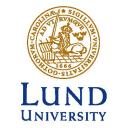Gene ID Conversion Tool is a comprehensive and fast accession mapping system in DAVID 2.1. With it any given gene accession can be quickly mapped to another based on the user's choice. The tool also automatically suggests possible choices for the ambiguous gene accessions in the list.
...continue to readBASE is a comprehensive free web-based database solution for the massive amounts of data generated by microarray analysis.
...continue to read
Add to my favorites
Remove from my favorites
Category: Gene expression, DNA microarray data analysis
Subcategories: NCBI
The Gene Expression Omnibus (GEO - NCBI) is a public repository that archives and freely distributes microarray, next-generation sequencing, and other forms of high-throughput functional genomic data submitted by the scientific community. In addition to data storage, a collection of web-based interfaces and applications are available to help users query and download the experiments and gene expression patterns stored in GEO.
...continue to readBabelomics is an integrative platform for the analysis of transcriptomics, proteomics and genomic data with advanced functional profiling. This new version of Babelomics integrates primary (normalization, calls, etc.) and secondary (signatures, predictors, associations, TDTs, clustering, etc.) analysis tools within an environment that allows relating genomic data and/or interpreting them by means of different functional enrichment or gene set methods. Such interpretation is made not only using f
...continue to read
Add to my favorites
Remove from my favorites
Category: DNA microarray data analysis
Subcategories: EMBL
The ArrayExpress Archive (EMBL-EBI) is a database of functional genomics experiments including gene expression where you can query and download data collected to MIAME and MINSEQE standards.
...continue to read
Add to my favorites
Remove from my favorites
MicroArray Quality Control
Category: DNA microarray data analysis
The purpose of the MAQC project is to provide quality control tools to the microarray community in order to avoid procedural failures and to develop guidelines for microarray data analysis by providing the public with large reference datasets along with readily accessible reference RNA samples.
...continue to readPage: 1




